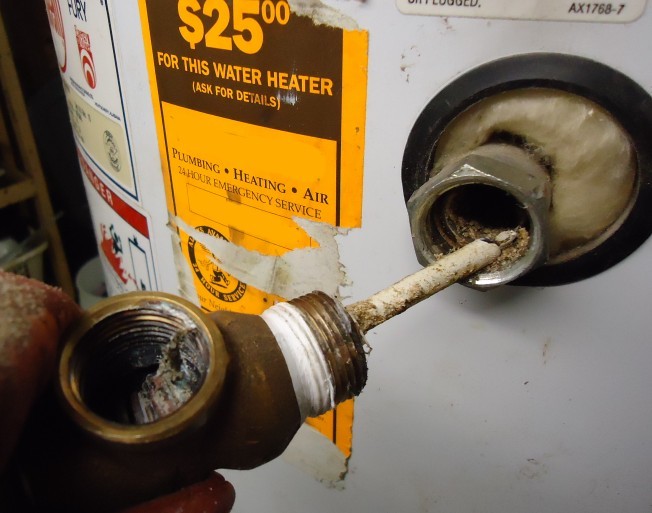Professional Tips on Maintaining Your Home's Hot Water System
Professional Tips on Maintaining Your Home's Hot Water System
Blog Article
Were you interested in know-how around Tips For Maintaining Your Hot Water Heater?

Hot water is important for day-to-day convenience, whether it's for a rejuvenating shower or cleaning dishes. To guarantee your hot water system runs efficiently and lasts much longer, regular maintenance is essential. This write-up provides sensible ideas and insights on just how to preserve your home's warm water system to avoid disturbances and expensive repairs.
Introduction
Keeping your home's hot water system could appear complicated, yet with a few simple actions, you can ensure it runs smoothly for several years to come. This overview covers everything from comprehending your warm water system to DIY upkeep tips and recognizing when to hire specialist help.
Relevance of Maintaining Your Warm Water System
Regular upkeep not just prolongs the life-span of your hot water system yet also ensures it runs efficiently. Overlooking upkeep can result in reduced performance, higher power costs, and even early failing of the system.
Indicators Your Hot Water System Requirements Upkeep
Understanding when your warm water system needs interest can stop major problems. Keep an eye out for signs such as inconsistent water temperature level, strange noises from the heating unit, or corroded water.
Understanding Your Hot Water System
Prior to diving right into maintenance tasks, it's practical to understand the fundamental components of your hot water system. Normally, this consists of the water heater itself, pipes, anode poles, and temperature level controls.
Monthly Maintenance Tasks
Routine month-to-month checks can aid catch minor problems prior to they rise.
Purging the Water Heater
Flushing your water heater eliminates sediment accumulation, boosting performance and lengthening its life.
Checking and Replacing Anode Rods
Anode rods prevent corrosion inside the storage tank. Checking and changing them when broken is critical.
Inspecting and Adjusting Temperature Settings
Adjusting the temperature settings guarantees ideal performance and security.
Do It Yourself Tips for Upkeep
You can do numerous upkeep jobs on your own to maintain your warm water system in leading problem.
Looking for Leakages
On a regular basis evaluate pipelines and connections for leaks, as these can result in water damage and higher bills.
Testing Pressure Relief Valves
Checking the pressure relief valve ensures it functions correctly and prevents excessive stress build-up.
Shielding Pipelines
Protecting hot water pipes decreases heat loss and can conserve power.
When to Call an Expert
While DIY maintenance is valuable, some concerns need expert knowledge.
Facility Problems Needing Professional Help
Instances consist of major leaks, electric troubles, or if your hot water heater is regularly underperforming.
Regular Expert Maintenance Benefits
Specialist upkeep can include comprehensive inspections, tune-ups, and making sure conformity with safety and security requirements.
Conclusion
Normal upkeep of your home's hot water system is essential for performance, durability, and cost financial savings. By complying with these tips and understanding when to seek specialist assistance, you can ensure a trusted supply of hot water without unexpected disturbances.
How to Maintain an Instant Hot Water Heater
Before tinkering with your hot water heater, make sure that it’s not powered on. You also have to turn off the main circuit breaker and shut off the main gas line to prevent accidents. Also turn off the water valves connected to your unit to prevent water from flowing into and out of the appliance. 2. When you’re done, you have to detach the purge valves’ caps. These look like the letter “T†and are situated on either side of the water valves. Doing so will release any pressure that has accumulated inside the valves while at the same time avoid hot water from shooting out and burning your skin. 3. When the purge valves’ caps are removed, you have to connect your hosing lines to the valves. Your unit should have come with three hoses but if it didn’t, you can purchase these things from any hardware or home repair shops. You can also get them from retail stores that sell water heating systems. Read the user’s manual and follow it to complete this task properly. When the hosing lines are connected, open the purge port’s valves. 4. You should never use harsh chemical cleaners or solutions when cleaning your unit. Make use of white vinegar instead. It should be undiluted and you’ll probably use about 2 gallons. 5. Now flush your water heater. This task should probably take about 40 minutes. We can’t give you specific directions for this because the procedure is carried out depending on the type, model and brand of your heater. With that being said, refer to the user’s manual. 6. When you’re done draining the unit, you have to turn off the purge port valves again. Remove the hosing lines that you earlier installed on each of the water valves. Put the valve caps (purge port) back in their respective places and be very careful so as not to damage the rubber discs that are found inside these caps. 7. Now that everything’s back in place, check your user’s manual again to find out how to reactivate your water heating system. 8. Once it is working, turn one of your hot water faucets on just to let air pass through the heater’s water supply pipes. Leave the tap on until water flows smoothly out of it. https://www.orrplumbing.com/blog/2014/september/how-to-maintain-an-instant-hot-water-heater/

I was made aware of that editorial on Water Heater Maintenance Tips You Can't Afford to Forget from a good friend on a different web address. Do you know about anybody else who is sincerely interested in the topic? Why not promote it. Bless you for being here. Kindly check up our website back soon.
Visit Our Site Report this page